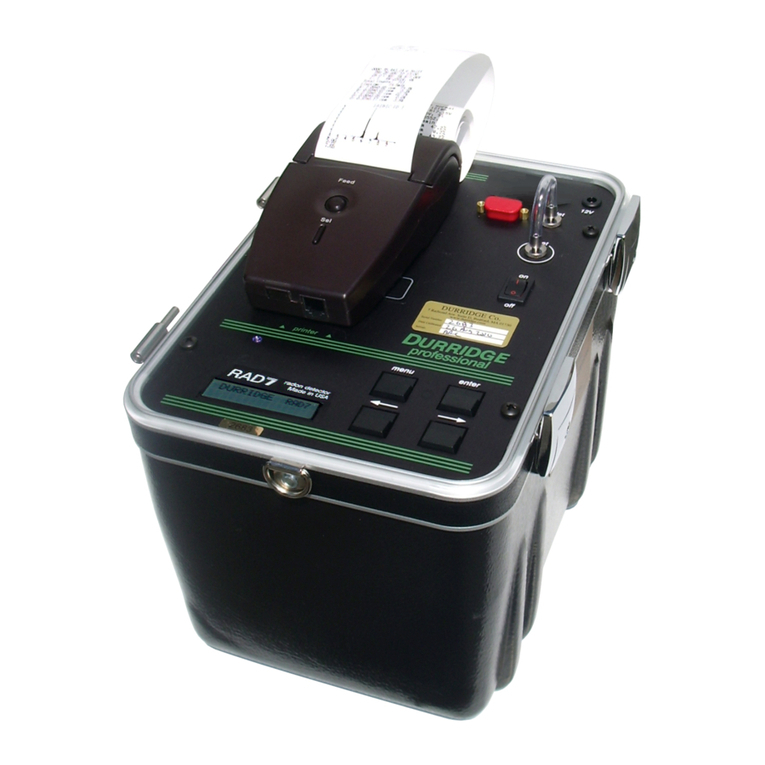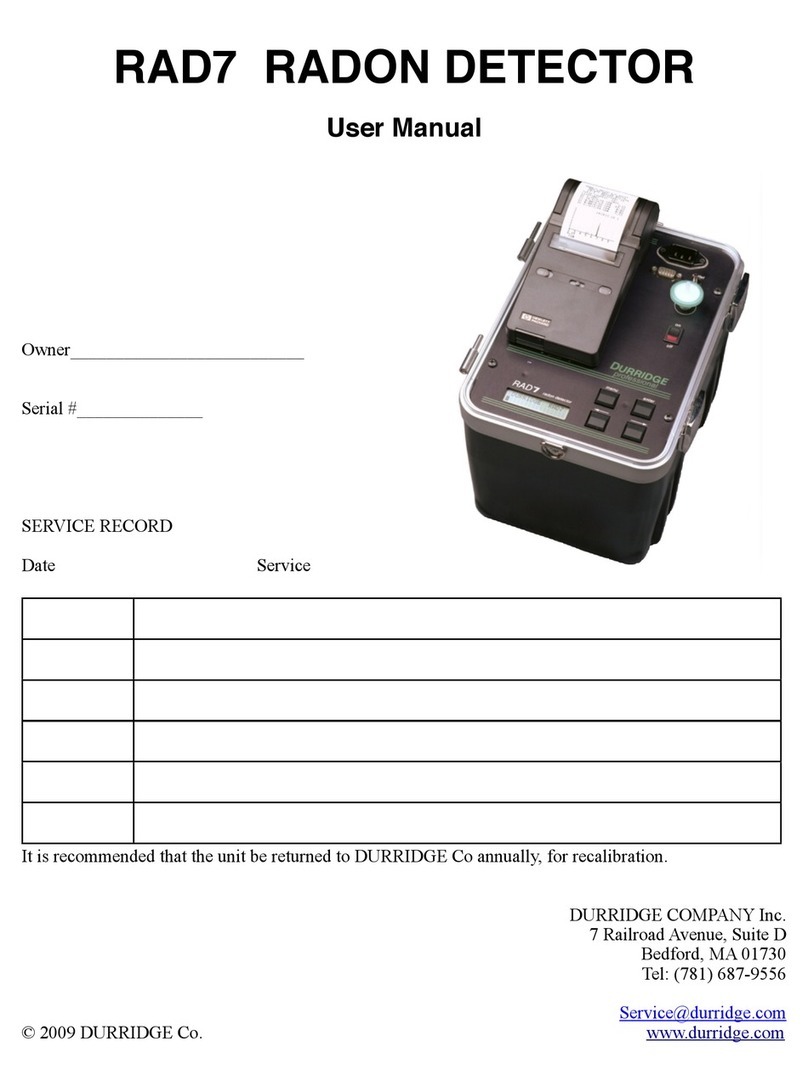INTRODUCTION
e RAD7 is a highly versatile instrument that can form the basis of a comprehensive radon measurement
system. It may be used in many different modes for different purposes. is manual adopts a progressive
approach, in which there is, first, a simple, step-by-step description of how to get readings for a) real-time
monitoring, and b) sniffing. Next comes a more detailed description of the many features of the
instrument and how to access them. e rest of the manual covers a whole range of topics, in somewhat
arbitrary order. We recommend that, as soon as possible, you read the entire text, just so that you will have
an idea of what there is. While you can start to make good measurements on the first day of ownership of
the RAD7, it can take years to master the subtleties of radon and thoron behavior, and to appreciate the
full capabilities of the instrument.
We have tried to make the manual easy to use, with a useful table of contents. Please let us know how well
we have succeeded. If there are some topics inadequately covered, please tell us. We will issue updates
from time to time.
Points of special note
e RAD7 is a rugged and long-lasting piece of equipment. ere are many units still in daily use that
were sold ten years ago or more. However, it is a sophisticated, precision electronic device, and it is not
hermetically sealed, so please treat it with respect. Please do not allow water, other liquids or dirt to get
into the machine. If using it somewhere where it may get splashed, damaged, or exposed to rain, please
protect it. See Chapter 4.8.1.
e batteries are lead-acid technology, like a car’s. If lein a discharged state they will lose capacity. Aer
running the RAD7 on its batteries please recharge them as soon as possible (by plugging in the unit).
With careful use the batteries will last five years or more.
Finally, there is one security feature that is sometimes inadvertently set by an inexperienced, though
authorized, user; namely the keypad lockout. If the keypad ceases to function, and all you see is
DURRIDGE RAD7 on the display, just do the following: Hold down the [ENTER] and two arrow keys
until you hear a beep, release the three keys and immediately push [MENU]. You should then be rewarded
by >Test on the display. If the tone was set to OFF, then you will not hear the beep, so hold the three
keys down for three to four seconds, before releasing them and pushing [MENU], - try hold-down times a
little longer, or shorter, if, at first, you do not succeed.
Shipping and Contact Information































